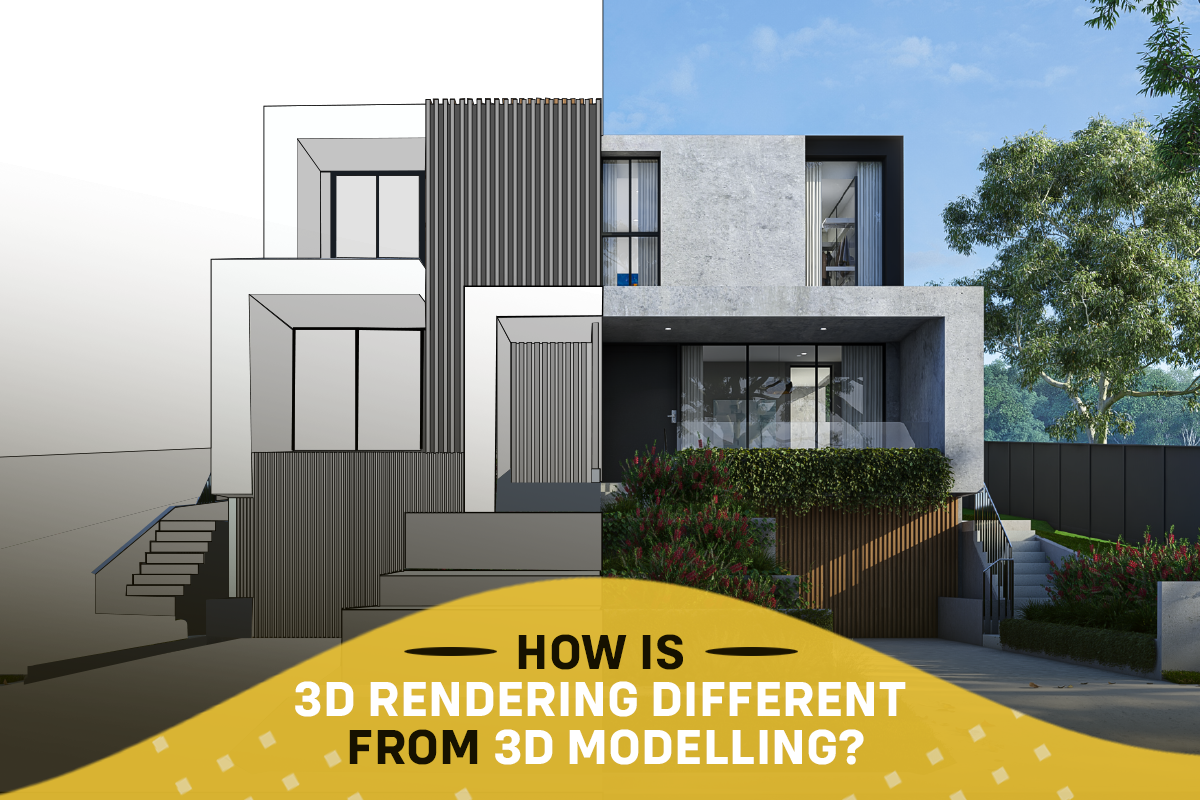If you’re part of the graphic designing, architecture, or real estate industries, you’ll know that the terms 3D renderings and 3D modeling are often used, albeit interchangeably. However, they are distinct terms that have their own meaning and importance. Read on to know the difference.
Whenever you begin a project, you’re likely to look for the best 3D rendering companies to provide high-end visualization services for your business. At this point, you should know what service are you exactly looking for. With the terms 3D modeling and 3D rendering overlapping, you might often use them synonymously and this can lead to a whole lot of confusion, especially for your clients. It helps to understand these terms and know their differences so you’ll know what you require for your business.
Understanding the differences between these terms also helps you know the process workflow, fairness of the price estimations, and the timelines for specific projects. It’s important to note that both 3D modeling and 3D renderings are different stages of the same 3D workflow. In this blog, we’ll break down both these terms so you can clearly differentiate between them.
Table of Contents
What is 3D Modelling?
3D modeling involves the process of creating three-dimensional images using computer software and mathematical equations. It results in a 3D file containing a geometric representation of the architectural structure. These models are further used to create animations and render. Designers make use of specialized software to create these virtual models including Blender, ZBrush, Cinema 4D, and 3ds Max. 3D modeling helps clients interpret what a space will look like in the future enabling them to give you better feedback so you can make changes to reduce any post-construction cost-incurring corrections.
What is 3D Modelling used for?
There are plenty of uses for 3D models besides rendering and here are a few:
- Displays furniture and other objects and their spatial relation to each other
- Creates more engaging interactions with clients
- Removes major system conflicts before installation
- Foresees and removes any interferences in the building system
What is 3D Rendering?
3D rendering is the process that takes place after the completion of a 3D model. 3D rendering transforms the graphical representation into an animated model, video, or image. A professional artist uses software like SOLIDWORKS visualization, Corona Renderer, Lumion, V-Ray, and more to create 3D renders. This specialized software helps you add lights, textures, shadows, etc so you can create your final 3-Dimensional output to a 2D interpretation. The final result is a realistic, digital snapshot of a building or homes that aren’t physically built or are in the process of completion.
The benefits of 3D rendering are many including virtual walkthroughs of unbuilt spaces.
What are the benefits of 3D rendering?
3D rendering comes in handy when it comes to demonstrating the benefits of a product or service.
- Helps real estate agents showcase properties to potential clients in all their glory
- Boosts and facilitates digital marketing efforts
- Displays ideas using still renderings, virtual tours, and floor plans
- Helps to improve any design before installation or construction
Know the Difference:
The Results
While 3D modeling results in a geometric representation of an object with 3 dimensions, rendering is an artistic representation of modeled objects in the form of an animation or a still image.
3D Modeling First, then Rendering
Both 3D rendering and 3D modeling are subsequent stages in CGI creation. First, the artist creates a 3D model, and then a CGI professional textures it so it looks like it’s made from wood, glass, etc to make it appear realistic. 3D Rendering occurs after this process by customizing the light, camera positioning, and tuning the textures and shadows.
3D models can be reused in different 3D renders
And, 3D models are easy to modify and therefore can be used for multiple renders resulting in different pictures. This means that the same 3D model can be used with different backgrounds to serve different purposes. On the other hand, a render is much harder to edit.
We’ve spoken about both 3D renderings and 3D modeling, and their uses so that you can tell the difference and understand the entire process. They are both steps that are a part of the whole 3D visualization process.
RenderVisuals is a premium 3D rendering service provider that gives you all-around rendering services from 3D modeling to 3D rendering. We deliver top-notch renders that can help your projects shine among your clients.
If you have any further queries we, at RenderVisuals would be happy to assist you. Reach out to us at +61-406 822 061 so we can help you choose the right option. You could also visit our website to learn more about our 3d rendering services.



